Before Britton: Showalter's mistake recalls fatal decisions in postseasons past

All of baseball’s past is prologue. It is one of the game's best—and most marketable—qualities. Thus, no matter how thrilling the Blue Jays’ 5-2 win against the Orioles in the American League wild-card game on Tuesday was, it was not without precedent. There have been extra inning classics in Octobers past. There have been walk-off home runs in do-or-die games before. And there surely have been curious managerial decisions that overshadowed the outcome of the game itself.
Such was the case when Baltimore manager Buck Showalter elected not to use closer Zach Britton—possessor of both a filthy sinker and a major-league-record 0.54 ERA—in multiple instances in which his team’s season hung in the balance. Toronto’s Edwin Encarnacion finally made Showalter pay when he ripped a three-run, walk-off home run into the leftfield seats at Rogers Centre in the bottom of the 11th.
That blast may have officially ended the game, but it certainly seemed over from the moment Ubaldo Jimenez (ERA: 5.44) was allowed to pitch to Encarnacion in the first place. Afterward, Showalter insisted he had faith in all of his relievers and that Jimenez’s recent success—which included a 2.82 ERA in the second half—gave him confidence he could escape the jam and still allow Britton to be used with a chance to preserve a potential lead.
Inexplicable though it may have been, Showalter’s decision to keep the best reliever in baseball in the bullpen while instead calling upon a faded righthanded starter in a crucial postseason game was not unique, not even for Showalter. Before Encarnacion even completed his joyous journey around the bases, it was easy to recall two similar decisions—and outcomes—both more than a decade earlier.
Showalter’s first gig as a major league manager came with the Yankees, and it ended in 1995, after New York lost a thrilling American League Division Series to the Mariners. With the decisive Game 5 deadlocked at 4-4 in the ninth inning, Showalter made a move that foreshadowed his choice 21 years later, opting to use a past-his-prime starter pitching in relief rather than going to his closer in a tie game on the road. That decision is more easily defended. While John Wetteland had saved 31 games for the Yankees that year, he’d also been lit up for a 14.54 ERA by the Mariners’ potent lineup in the ALDS. Jack McDowell, though a far cry from the pitcher he had been when he won the AL Cy Young Award for the White Sox two seasons prior, was a proven commodity and far better than the batch of middling middle relievers Showalter was left to choose from after a rookie named Mariano Rivera finished his third scoreless outing of the series. Even after the Yankees went ahead 5-4 in the top of the 11th, Showalter stuck with McDowell, who gave up three hits—including Edgar Martinez’s walk-off, two-run double—without recording an out in the bottom half as Seattle rallied for a 6-5 win.
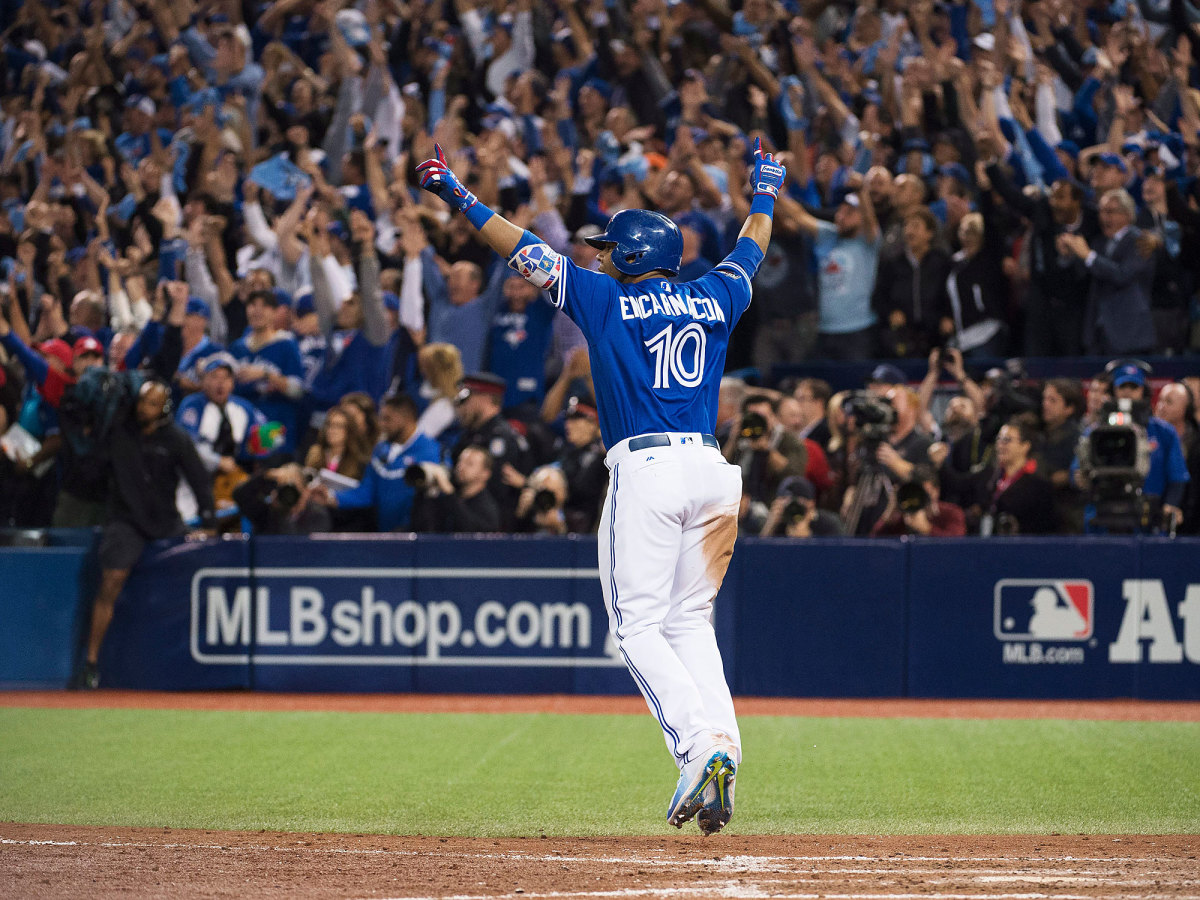
After that season, New York owner George Steinbrenner replaced Showalter with Joe Torre. Torre guided the Yankees to four World Series titles and six pennants in his first eight seasons, thanks in large measure to Rivera, who quickly established himself as the best reliever in baseball history.
What may have been the ultimate example of Rivera’s domination and value came in Game 7 of the 2003 ALCS at Yankee Stadium, when he entered a tie game in the ninth inning against a Red Sox team that had led the majors with 961 runs scored that year. Rivera pitched three shutout innings, his longest outing since his days as Wetteland’s set-up man in 1996, and the Yankees eventually won on Aaron Boone’s unforgettable walk-off home run in the bottom of the 11th.
That blast earned New York a spot in the World Series against the Florida Marlins. After splitting the first two games in the Bronx, the Yankees won Game 3 in Miami, 6-1, with Rivera coming on in the bottom of the eight to protect a 2-1 lead and closing it out after New York added four insurance runs in the top of the ninth. He needed just 23 pitches to notch his 30th save in 32 career postseason appearances, and he lowered his ERA to a sparkling 0.77.
Mariano Rivera's Top Career Moments
Rivera's epic postseason debut
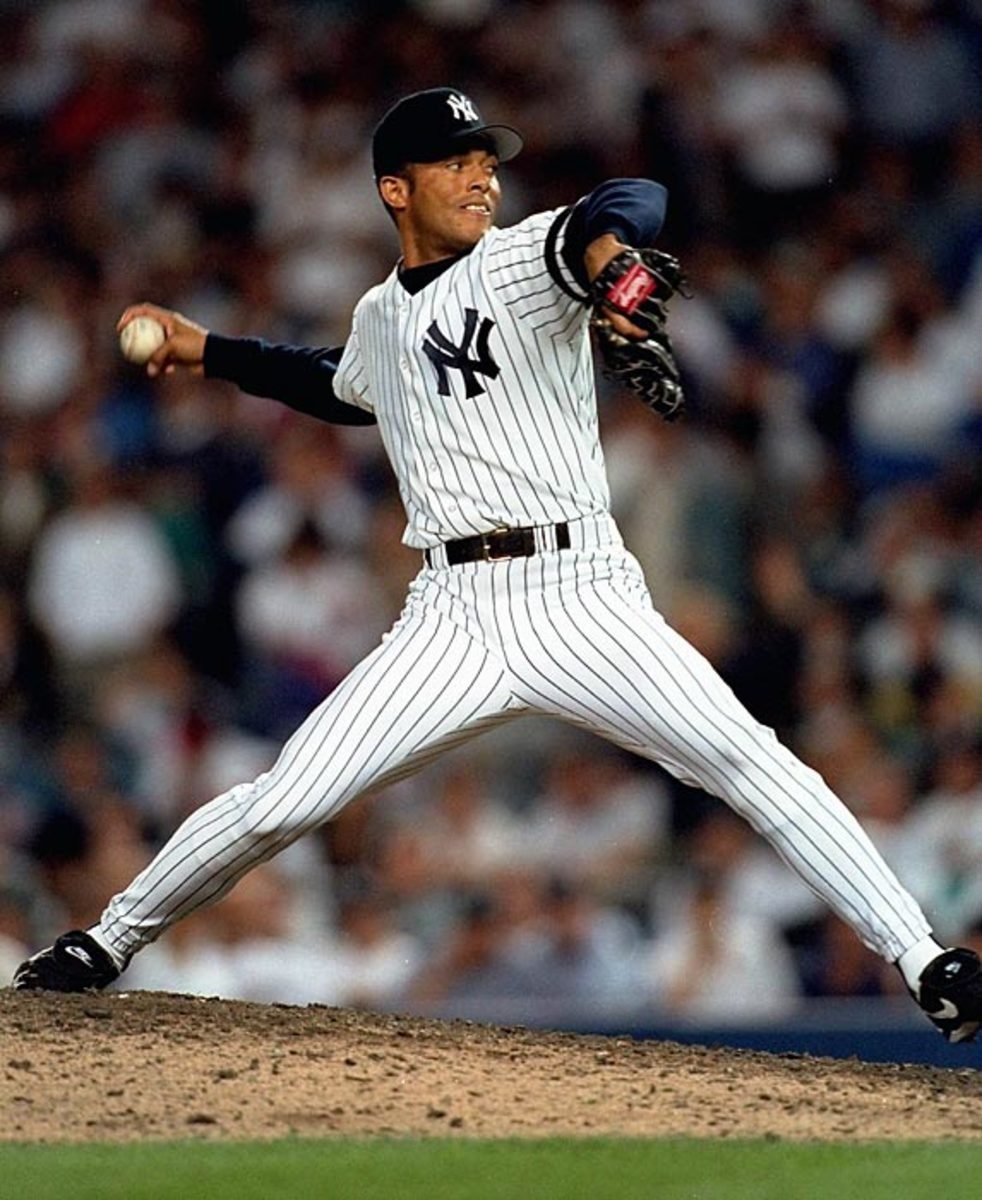
As a rookie, the 25-year-old Rivera spent the first three-quarters of his season bouncing between the rotation ? where he was knocked around for a 5.94 ERA in 10 starts ? and Triple-A Columbus. Not until September did he move to the bullpen for good, but when he did, he began to win New York manager Buck Showalter's trust. Rivera's introduction to the postseason ? which he would eventually come to dominate as no other pitcher had before ? came in the top of the 12th inning of Game 2 of the Division Series against the Mariners. He took over for a spent John Wetteland, who had pitched 3 1/3 innings of scoreless ball until serving up a tiebreaking solo homer to Ken Griffey Jr., and then a single to Edgar Martinez. Rivera struck out Jay Buhner to end the frame, then stayed on after the Yankees tied the score at 5-5 in the bottom of the 12th. He retired the first eight hitters he faced before Martinez and Buhner singled with one out in the 15th. Rivera responded by whiffing Doug Strange and getting future teammate Tino Martinez on a flyball. Jim Leyritz won the game with a solo homer in the bottom of the 15th, giving the Yankees a 2-0 series lead ? one that alas, they would not hold.
Rivera sets up a World Series clincher
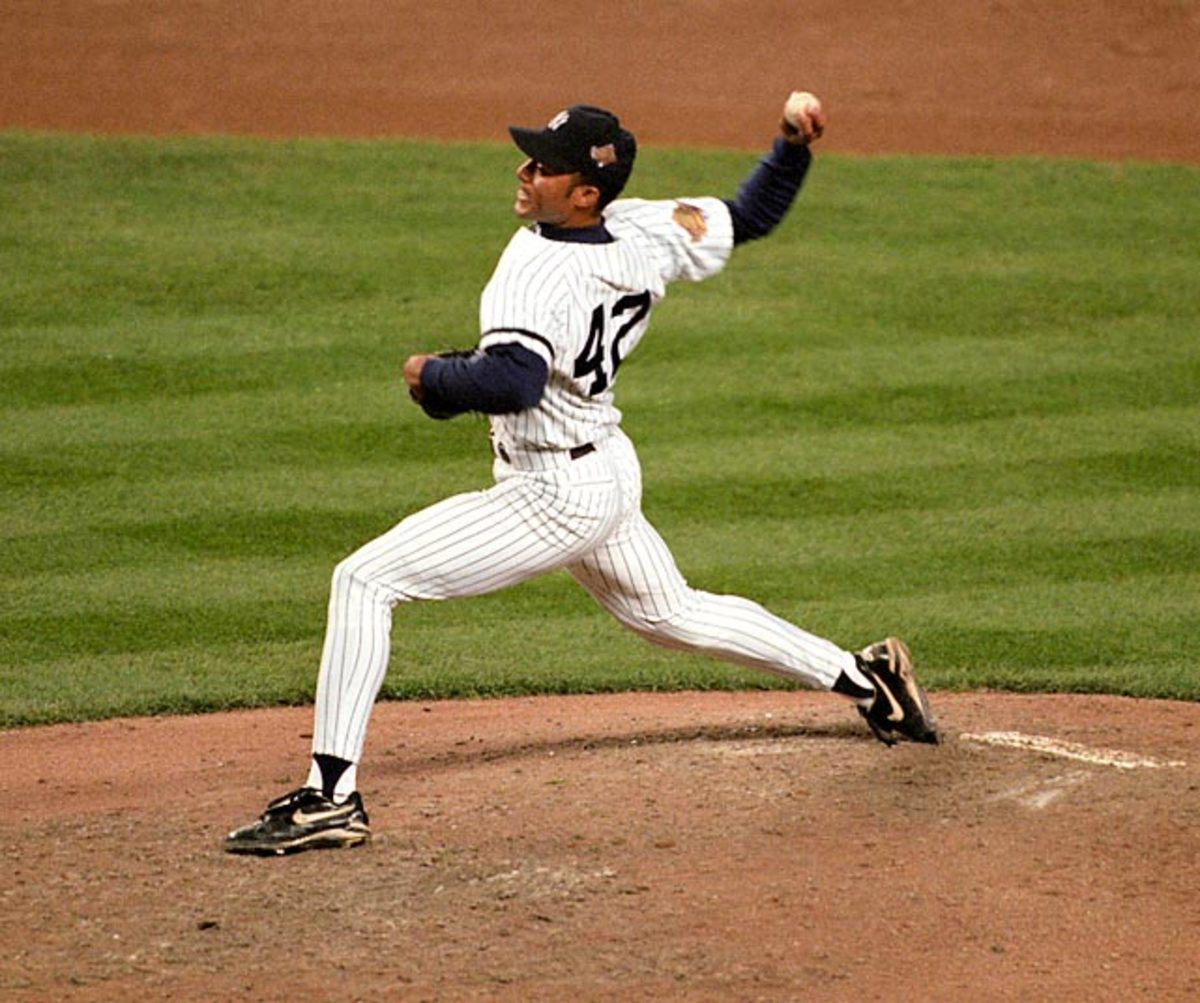
Under new manager Joe Torre, Rivera became entrenched as the Yankees' setup man in front of Wetteland, throwing 107 2/3 innings with a 2.09 ERA while striking out 130. He was so good that season that he placed third in the AL Cy Young voting behind the Blue Jays' Pat Hentgen and teammate Andy Pettitte. In the postseason, Rivera threw more than one inning in seven of his eight appearances. The last came in Game 6 of the World Series against the Braves. Starter Jimmy Key wobbled through 5 1/3 innings and left with a 3-1 lead that David Weathers and Graeme Lloyd protected by each collecting an out in the sixth, leaving New York nine outs away from its first championship since 1978.
Rivera sweeps out the Braves
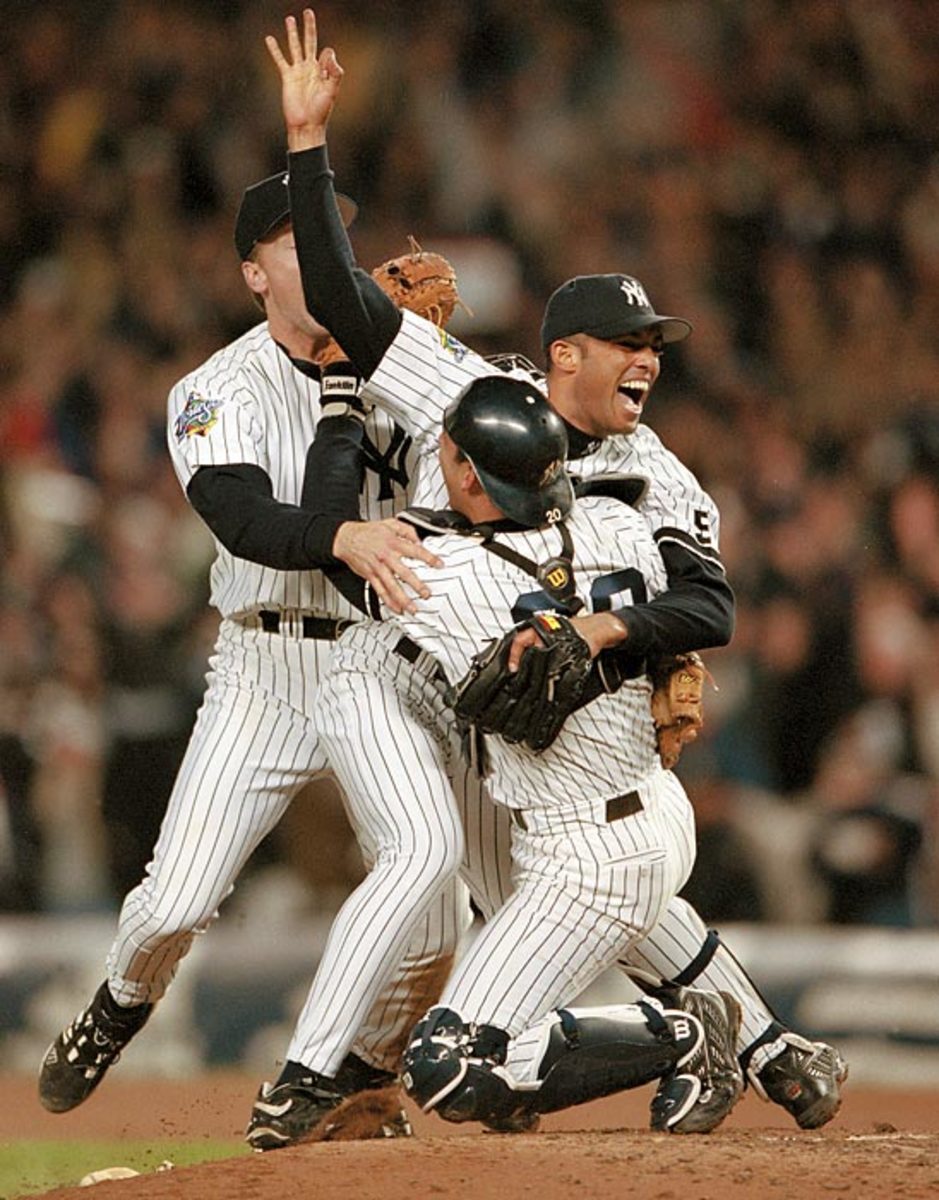
Rivera had already notched a save and a win as the Yankees built up a 3-0 series lead on the Braves and sent this not-yet-intrepid scribe to the Bronx with a chance of attending a World Series clincher. In pursuit of his first championship ring, Roger Clemens threw 7 2/3 innings of scoreless ball, though reliever Jeff Nelson allowed his inherited runner to score to narrow the lead to 3-1. With the upper deck of the stadium literally beginning to shake in anticipation of another championship, Rivera came on to retire Jones and end the eighth, Leyritz hit an insurance homer, and number 42 returned to mow down Atlanta in order in the ninth, finishing the job via a Keith Lockhart flyball to leftfielder Chad Curtis. To this day, it's still the only championship clincher I've had the privilege to attend and the only time Rivera was named World Series MVP.
Rivera empties the tank against the Red Sox
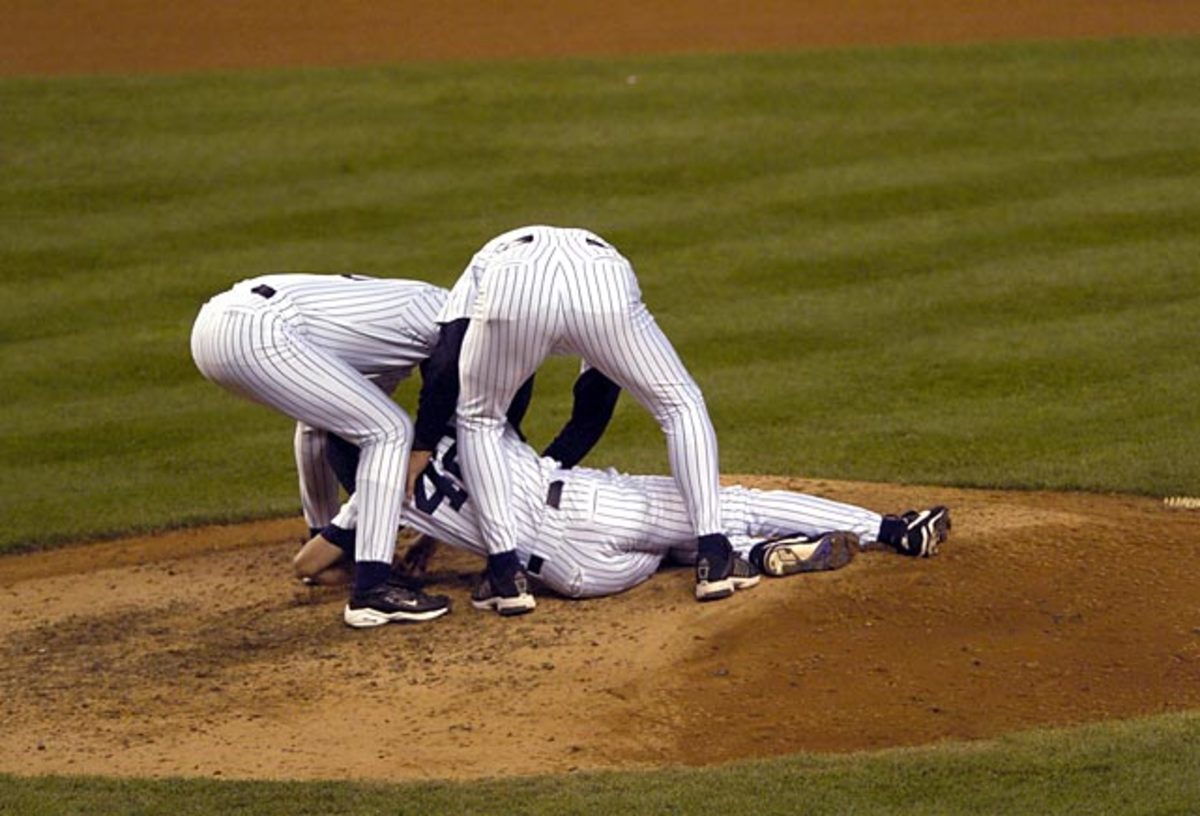
In an American League Championship Series Game 7 for the ages, the Yankees survived Clemens' infamous early implosion, clawing their way back from a three-run deficit to tie the score at 5-5 in the eighth after Grady Little left Pedro Martinez in for too long. The indomitable Rivera came on in the top of the ninth and retired nine of the 11 hitters he faced, throwing 48 pitches, stranding men on second base in both the ninth and the 10th innings and ending a 1-2-3 11th with a strikeout of Doug Mirabelli. When Aaron Boone hammered Tim Wakefield's first pitch for a solo homer in the bottom of the 11th, the Yankees were American League champions. The sight of a spent Rivera kneeling on the mound in thanks and exhaustion ?before Boone had even finished rounding the bases ? remains one of the most indelible images of his career. He was named ALCS MVP.
Rivera's All-Star appearance at Yankee Stadium
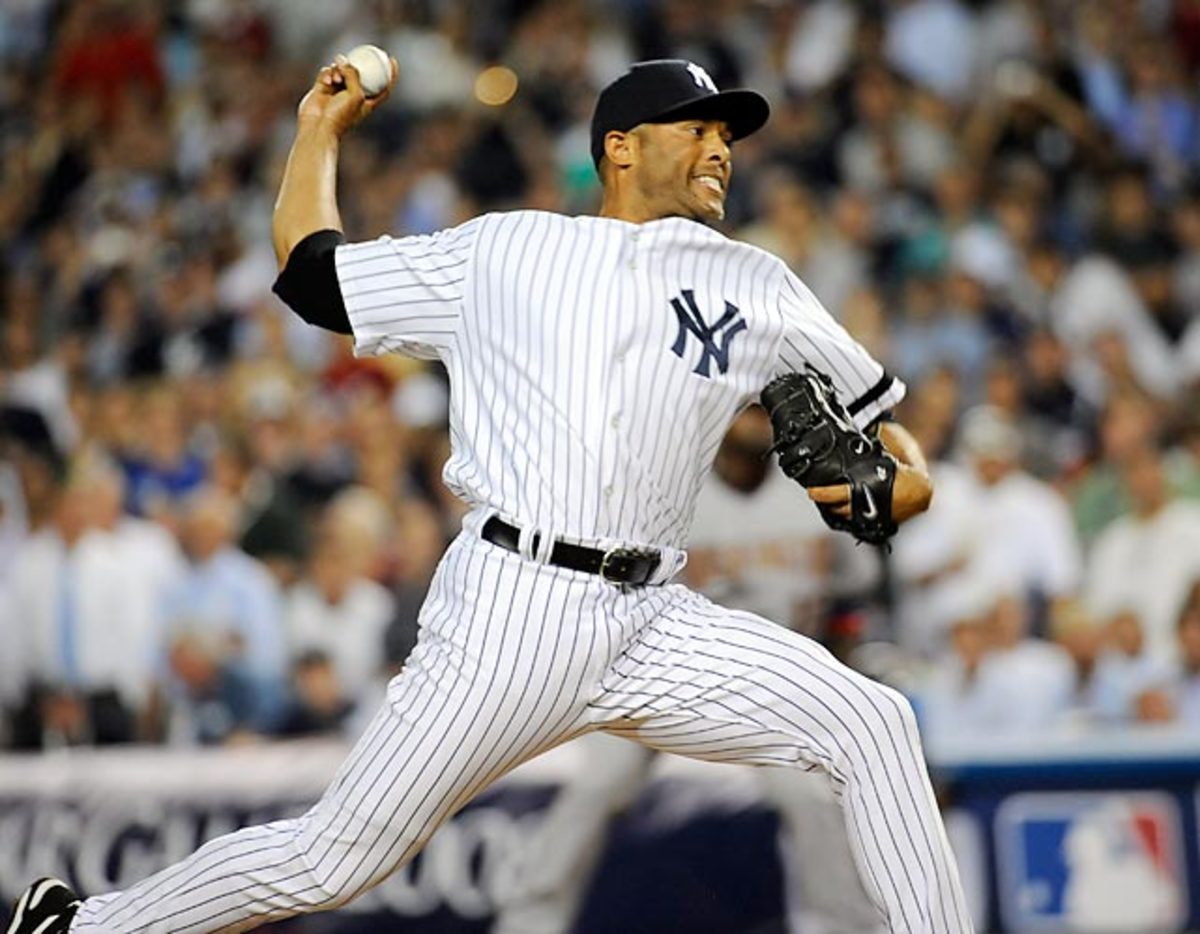
Rivera had already appeared in eight of the previous 11 All-Star Games by the time Major League Baseball held one in the Bronx to recognize the closing of the remodeled Yankee Stadium. To incredible fanfare and, of course, to Metallica's Enter Sandman, he entered a 3-3 tie with one out and a man on first in the top of the ninth inning in relief of the Angels' Francisco Rodriguez. Rivera induced Ryan Ludwick to ground into an inning-ending double play, and pitched a scoreless 10th despite allowing two hits after getting another DP from Dan Uggla. The AL ultimately prevailed in 15 innings.
Rivera closes down Yankee Stadium
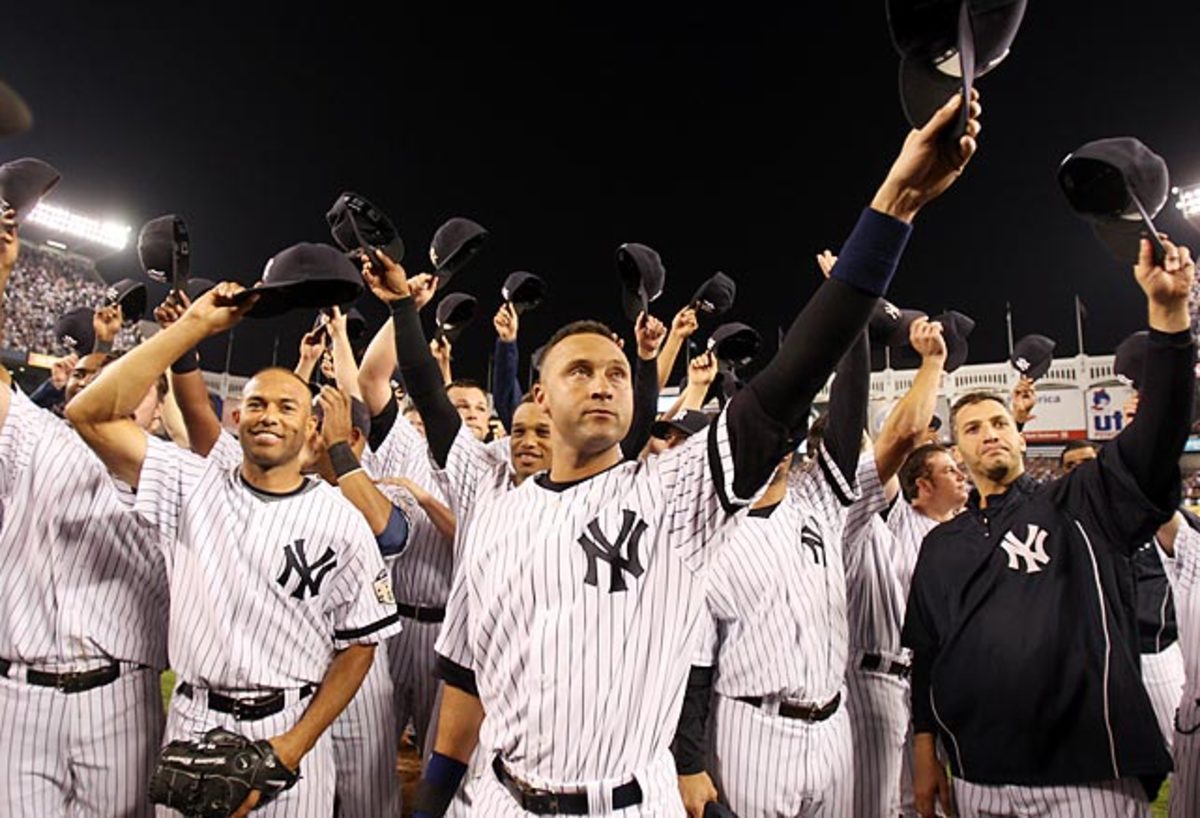
New York had not yet been mathematically eliminated from playoff contention when its final game at the remodeled House That Ruth Built came up on the calendar. In typical fashion, the organization pulled out all the stops to celebrate the end of the old stadium, inviting back more than 20 Yankees legends ? Yogi Berra, Whitey Ford, Don Larsen, Reggie Jackson and more ? who donned the pinstripes and took their old positions on the field during a pregame ceremony. Julia Ruth Stevnes, the daughter of Babe Ruth himself, threw out the first pitch. With manager Joe Girardi describing the pressure to win as akin to Game 7 of the World Series, the Yankees built up a 7-3 lead on the Orioles. Though it wasn't a save situtation, Rivera came on to work the ninth and shut the door in signature fashion, using just 11 pitches to dispatch Jay Payton, Luke Scott and Brian Roberts, all on ground balls.
Rivera's 500th career save
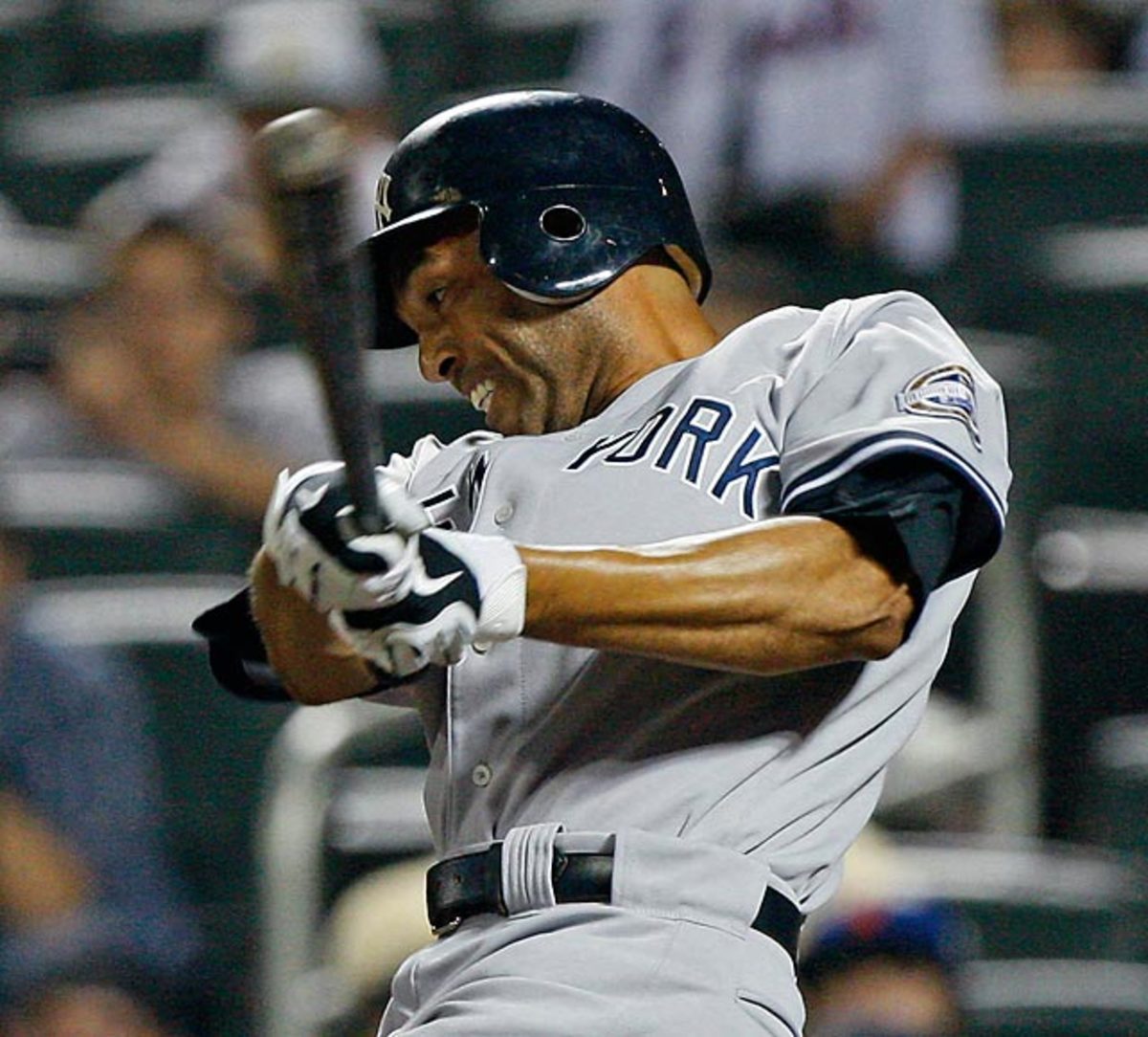
Rivera recorded his 500th save on June 28, 2009 but it wasn't even the most interesting part of his night. In the top of the ninth he made one of just his seven career plate appearances and reached base for the only time when he drew a walk against the Mets' Francisco Rodriguez with the bases loaded. That gave Rivera an RBI, the only one of his career.
Rivera clinches a fifth championship
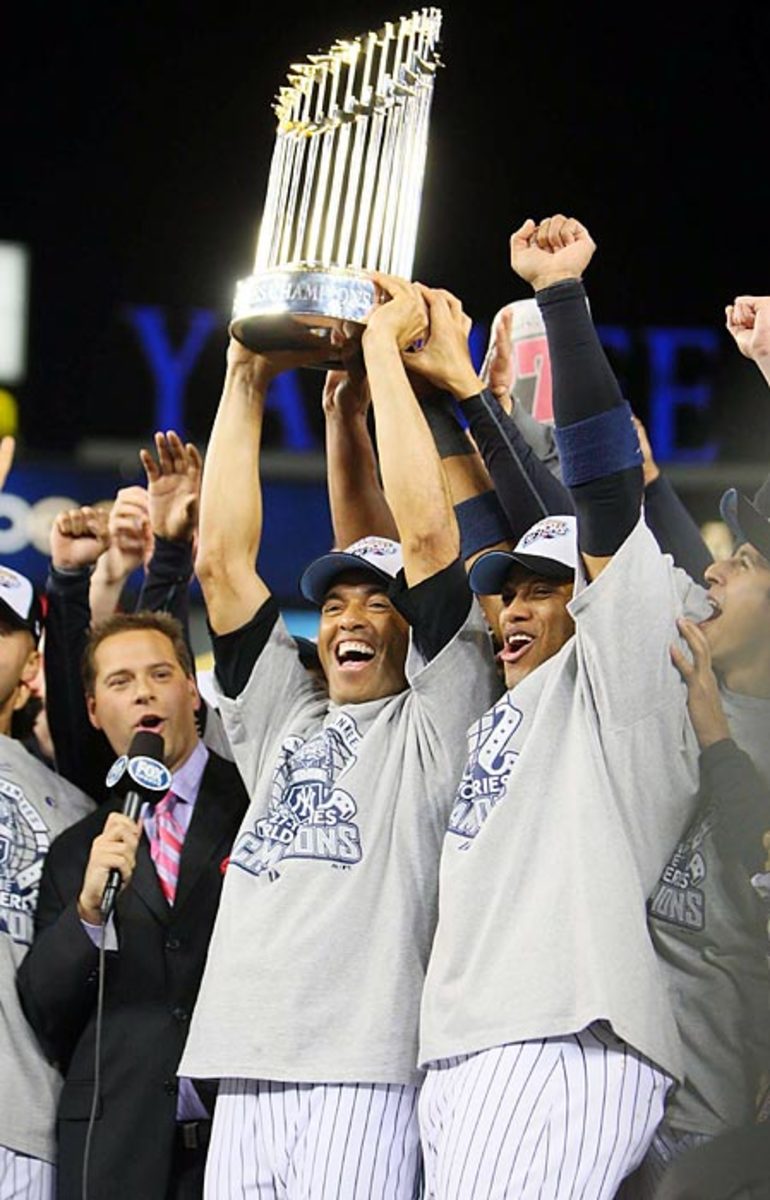
Nov. 4, 2009: Rivera clinches a fifth championship With big-money free agents CC Sabathia, A.J. Burnett and Mark Texieira joining the "Core Four" of Derek Jeter, Pettitte, Jorge Posada and Rivera, the Yankees marched back to the World Series for the first time since 2003. Facing the defending world champion Phillies, they carried a 3-games-to-2 lead back to the Bronx for Game 6. Once there, Hideki Matsui piled up six RBIs and helped to chase Pedro Martinez early as New York built a 7-3 lead. Girardi began counting down the outs once he pulled a flagging Pettitte ? pitching on three days' rest ? with two outs in the sixth. Joba Chamberlain got three of them. Damaso Marte got two more. Rivera came on with one out in the eighth. Though he allowed a two-out double to Raul Ibanez and issued a one-out walk to Carlos Ruiz in the ninth, he remained in control of the game, and retired Shane Victorino for the final out, giving the Yankees their 27th world championship. Of the eight teams that entered the postseason that fall, seven closers faltered at least once when the chips were down, making mistakes that proved fatal to their team's title hopes. Rivera, who allowed just one run in 16 postseason innings while converting all five of his save opportunities, was both literally and figuratively the last man standing in closing out a World Series for the fourth time.
Rivera sets the all-time saves record
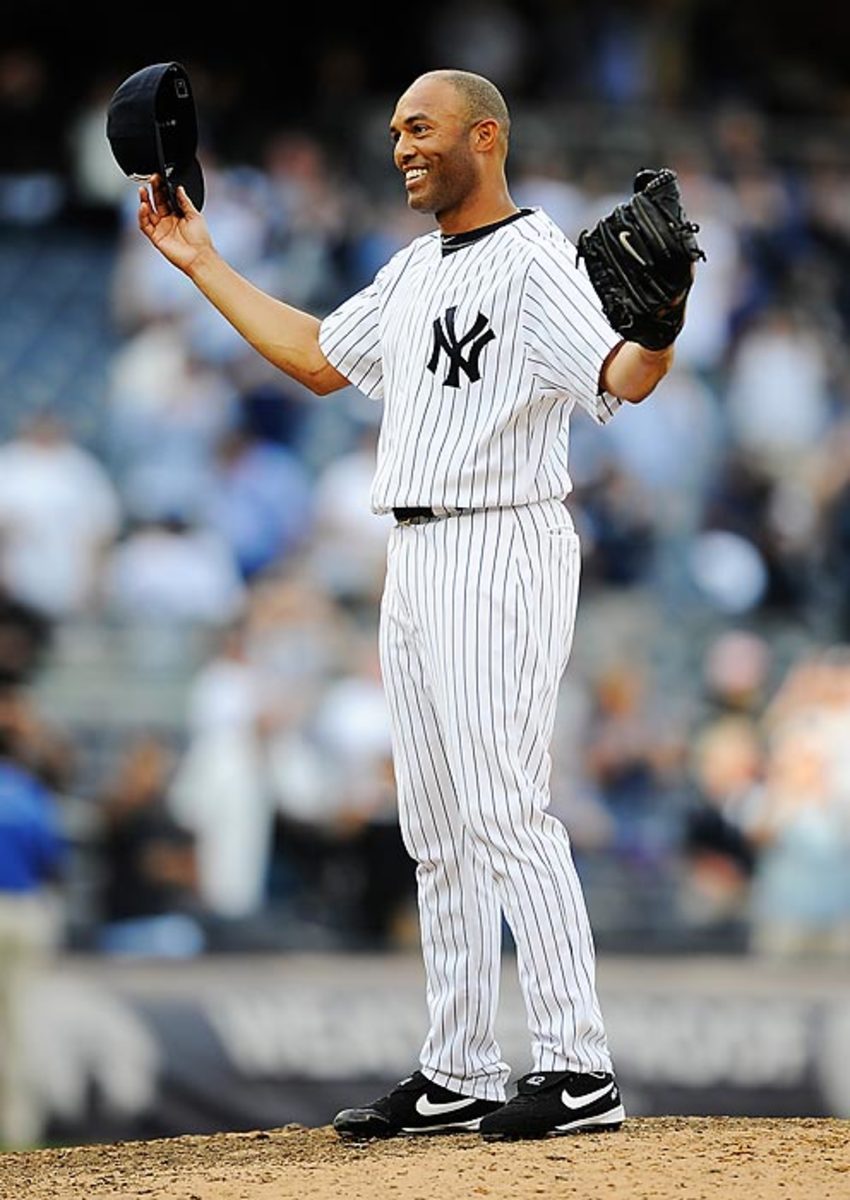
Trevor Hoffman became the first reliever to tally 600 saves and finished his career in 2010 with 601. Rivera ended that season with 559 himself, and followed that up at age 41 with a typically excellent year. He got save number 600 in Seattle on Sept. 13, and tied Hoffman in Toronto on Sept. 17. Two days later, he came on to protect a 6-4 lead in the ninth inning of a Monday afternoon makeup game against the Twins in the Bronx. He set down Trevor Plouffe, Michael Cuddyer and Chris Parmalee in order, catching the latter looking at an 0-2 cutter and then was mobbed by his teammates for a round of congratulatory hugs. Rivera left the field for a moment, but at the insistence of his teammates, returned to the mound by himself to bask in a lengthy ovation from a sparse but spirited crowd that was nowhere near the paid attendance of 40,000-plus.
Rivera at the 2013 All-Star game
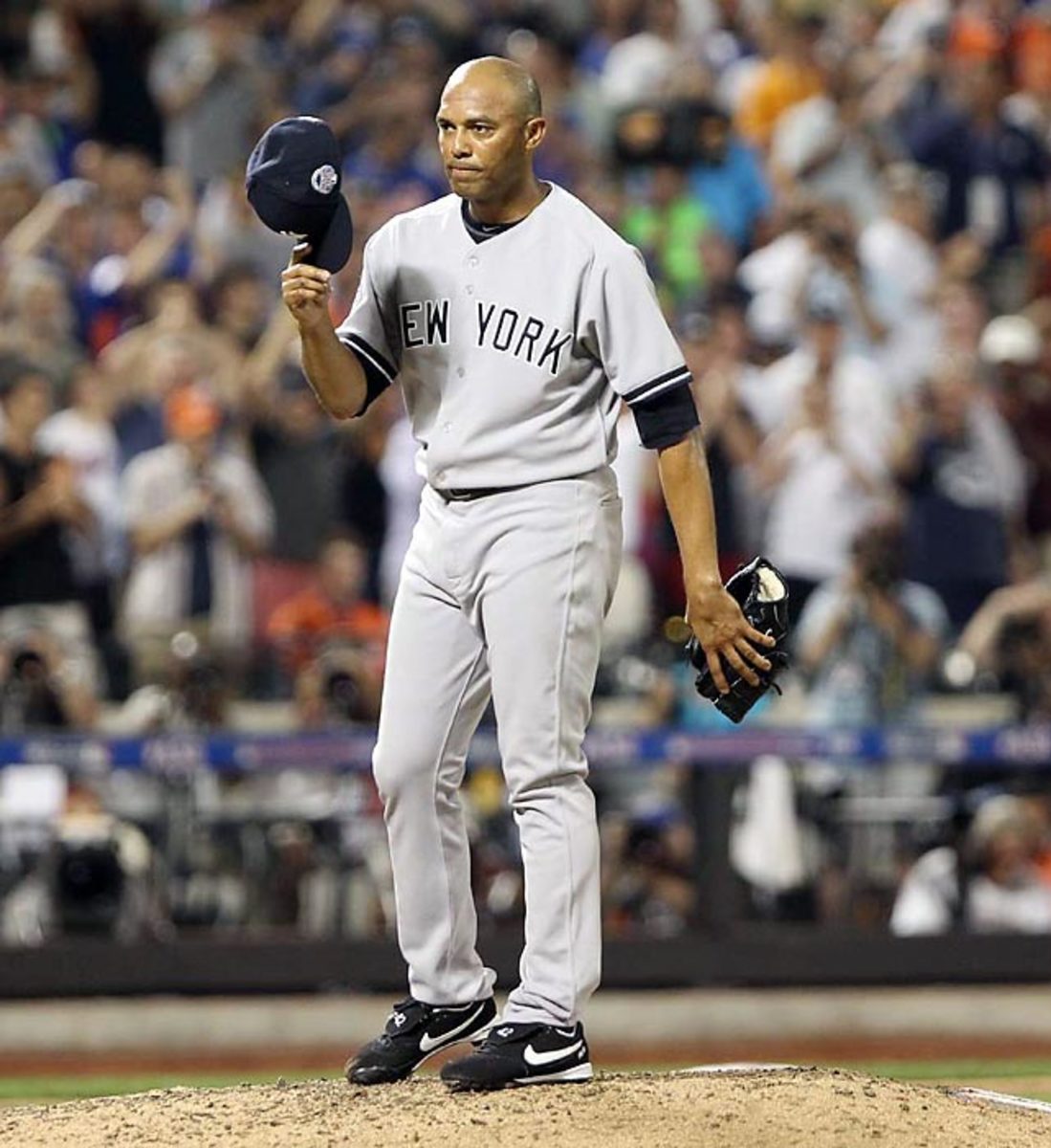
Rivera's 13th and final All-Star Game appearance came in New York, but at the Mets' Citi Field, not his home ballpark. American League manager Jim Leyland put Rivera in to start the bottom of the eighth to ensure he would get in the game and Rivera jogged out to en empty field. He stood alone on the mound, drinking in the applause from a sellout crowd and from two dugouts full of All-Stars. Rivera pitched a scoreless inning and earned MVP honors, making him the only man to win MVP at an All-Star Game, a League Championship Series and a World Series.
The Yankees retire Rivera's number
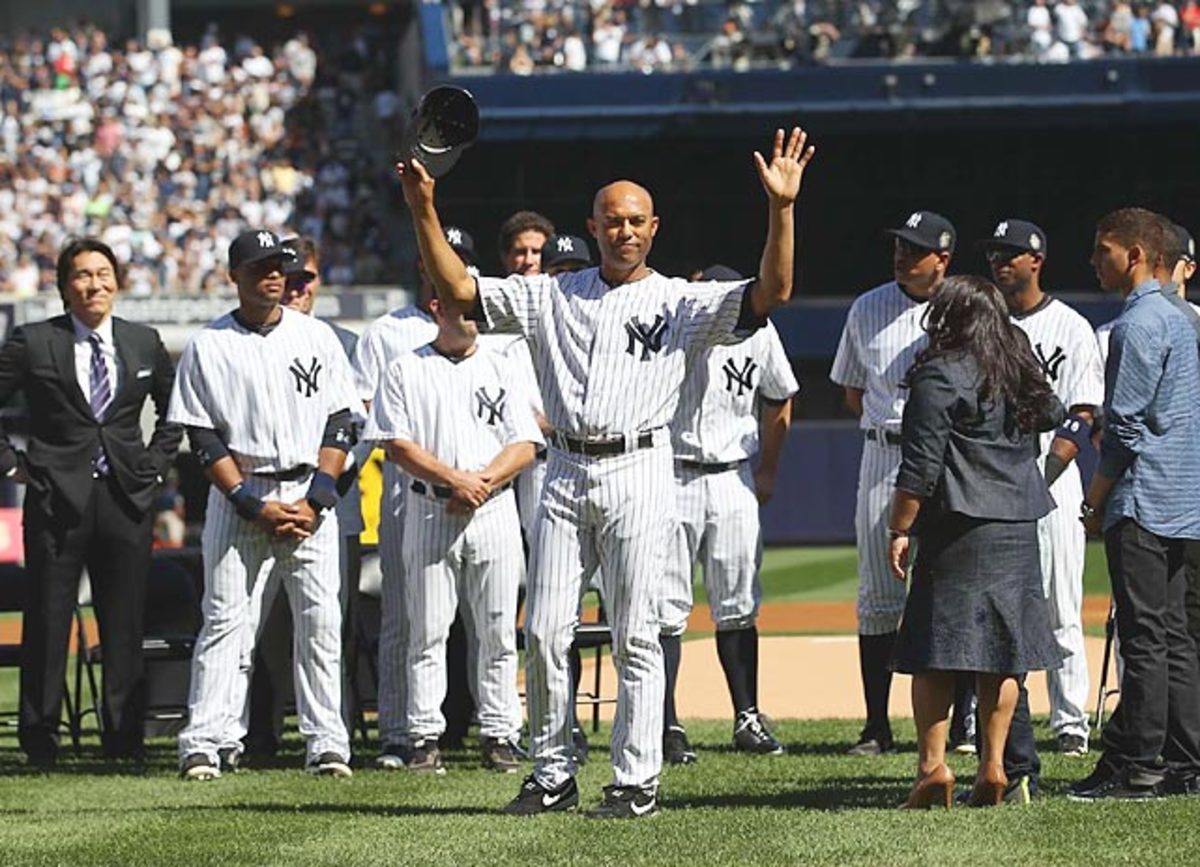
Even with their playoff hopes dwindling, the Yankees paid tribute to Rivera prior to their Sunday afternoon game against the Giants. In addition to inviting a handful of key teammates from different times in his career (David Cone, Tino Martinez, Nelson, Paul O'Neill, Bernie Williams) they brought in Jackie Robinson's widow, Rachel, and daughter, Sharon, for a special ceremony in which they retired number 42 ? Jackie's number. Forty-two had been retired throughout the majors in 1997, but players who were wearing it at the time were allowed to keep it, the last of whom in 2013 was Rivera. Metallica showed up to play Enter Sandman in person, and Rivera was given several gifts, including an electric guitar (presented by former Yankees players and current Giants coaches Roberto Kelly, Joe LeFebvre, Hensley Meulens and Dave Righetti), an amplifier (presented by Metallica) and a rocking chair. Fittingly, the also-retiring Pettitte was the starter at Yankee Stadium for the last time. He took a no-hitter into the sixth, but by the time Rivera came on with one out in the eighth, the Yankees were down 2-1 and in a jam with a man on second. Rivera got two quick outs, but could only watch as two of his teammates were thrown out at the plate in attempting to tie the game in the bottom half. Rivera pitched a scoreless ninth, but New York lost 2-1. Obviously, there were so many more memorable moments from Rivera's 19-year career, not all of which were positive. The striking thing, though, is that his lowest ones ? Sandy Alomar's home run in the 1997 ALDS, Luis Gonzalez's game-winning single in the 2001 World Series, his blown save against Boston in the 2004 ALCS, his torn ACL last year ? all came at other ballparks. Even more striking than the incredible numbers he put up in establishing his legacy as both the greatest closer of all time and (arguably) the greatest postseason performer of all time, was his resiliency. Rivera always bounced back from those stinging disappointments and lesser adversities ? the annual What's Wro
In his press conference before Game 4, Torre said of Rivera, “I don’t think you can trust anybody more than you trust Mariano,” before adding, “But today wouldn’t be a two-inning save. Hopefully we’re in position to [not need him] today.”
It didn’t look like they would when starter Roger Clemens—on the mound for what was at the time expected to be his last major league performance—gave up three first inning runs. But Clemens settled down to deliver six scoreless innings after that, and the Yankees eventually tied the game in the ninth on a two-out, two-run triple by Ruben Sierra off Florida closer Ugueth Urbina.
Jose Contreras came on to pitch the bottom of the ninth and retired the Marlins in order, picking up two strikeouts. He also pitched the 10th inning, working around a leadoff walk to Juan Pierre and ending the inning with two more Ks after Pierre had reached second.
In the 11th, the Yankees got runners to second and third with one out and the pitcher’s spot due up in the order. Torre pinch-hit for Contreras with outfielder Juan Rivera, who was intentionally walked. Boone then missed a chance to be the hero again when he struck out, and backup catcher John Flaherty followed by popping out to end the inning.
Three Thoughts: Showalter’s blunder costs O’s as Jays win wild-card thriller
Torre now faced a critical decision: Who to send out to the mound for the bottom of the 11th? His team was two wins away from wrapping up the World Series, and stealing a victory in a game in which the Yankees had been down to their final out would give New York three chances to close out the series, two at home if need be. The pitcher’s spot wasn’t due up in his lineup for seven more batters, so Torre effectively had two innings before he would have to worry about that.
The Yankees had included 11 pitchers on their World Series roster. Starters Mike Mussina (who had pitched Game 3), Clemens (Game 4) and David Wells (scheduled for Game 5) were obviously unavailable. Andy Pettitte, who had pitched 8 2/3 innings in Game 2 three days earlier and was scheduled to go in Game 6 three days later, would have been a method of last resort.
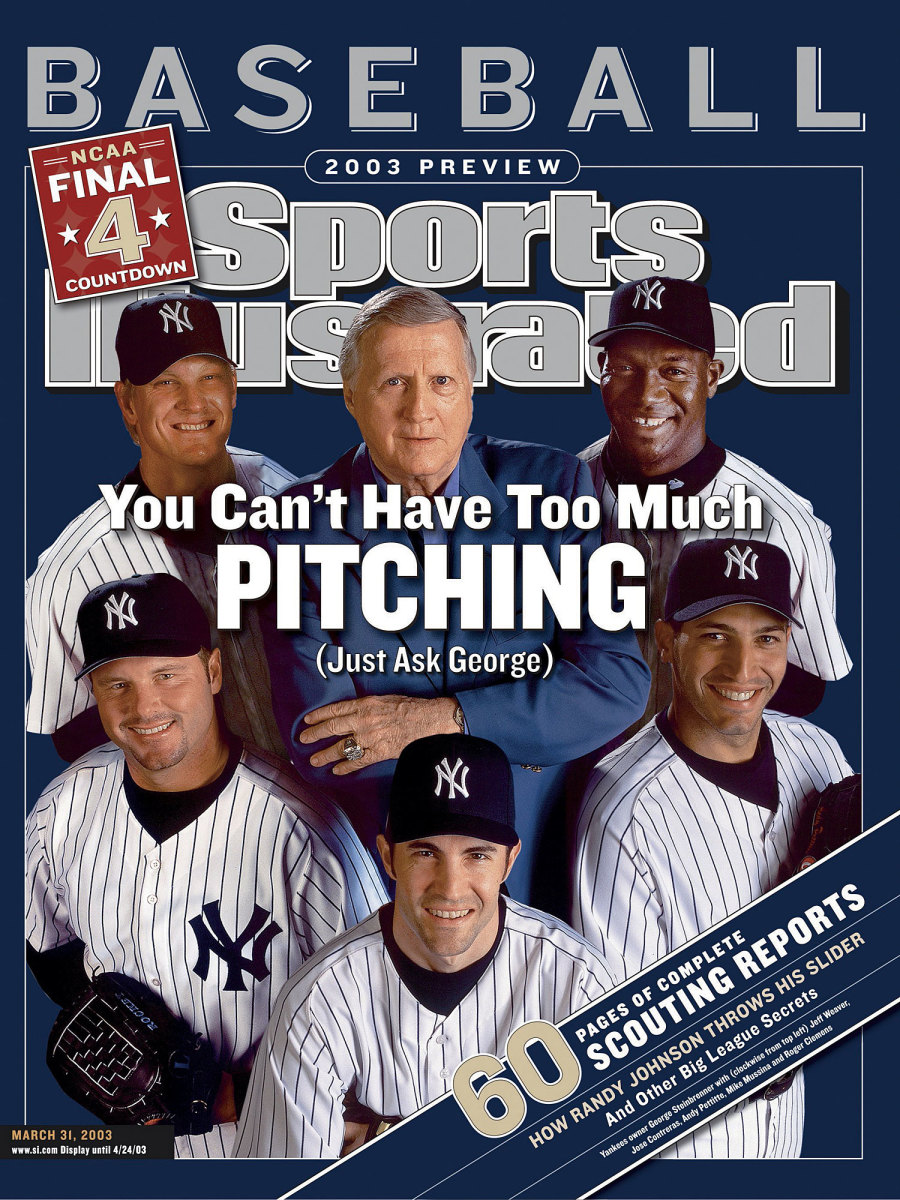
Among the seven relievers, Contreras and Jeff Nelson had already been used. That left Torre with the following five options:
Chris Hammond: A 37-year-old journeyman lefty, Hammond had appeared in 62 games that season, second only to Rivera among New York’s relievers, and posted a 2.86 ERA. However, he had not pitched at all during the postseason. In fact, he had been left off the roster for the ALCS against Boston but was added back for the World Series even though he hadn’t pitched since Sept. 26. Said Torre before the Fall Classic, “Matchup-wise Hammond could be more useful. Plus, you are playing in Florida, and you are going to pinch-hit and you may need to change pitchers more to get an out and the you have to deal with double switches and pinch-hitting.”
Felix Heredia: Another journeyman lefty, Heredia, 28, had been claimed off waivers from the Reds that August but had actually become useful to the Yankees in October, making six appearances and giving up one run in 4 2/3 innings. None of those outings, however, had come in the World Series.
Gabe White: Like Heredia, White, 31, was a journeyman lefty who had been acquired during the season from the Reds. He had pitched 3 1/3 innings in the postseason to date, allowing five hits and one run over three games, but he hadn’t yet appeared in the World Series.
Jeff Weaver: Before the season, Weaver was among the five Yankees starting pitchers who joined owner George Steinbrenner on Sports Illustrated’s baseball preview issue under the headline: “You Can’t Have Too Much Pitching (Just Ask George)”. A sixth, Wells, missed the photo shoot that day, but by year’s end, it was Weaver who was nowhere to be found. He had made 24 starts that season in his 32 appearances, but he posted a dreadful 5.99 ERA and a whopping 1.619 WHIP and had been relegated to a long-relief role late in the season. Weaver was still just 26 and a former first-round draft pick, but, like Hammond, he had not pitched in the entire postseason. He was New York’s long man in the bullpen, expected to be used only if a game had either gotten out of hand early or had lasted deep into extra innings.
Mariano Rivera: Torre’s pregame calculation that Rivera was only available for one inning was based on his hope that he would then be able to use Rivera to close out the Series in Game 5. Only once that year had Rivera followed up a two-inning outing by pitching again the next day. He actually pitched on each of June 28, 29 and 30 but then wouldn't pitch again until July 6. Using Rivera in Game 4 in an uncertain situation might have compromised Torre's ability to use him in Game 5 or 6.
Three righthanded hitters were due up for Florida in the bottom of the 11th: Jeff Conine, Mike Lowell and Derrek Lee. If anyone reached, another righty awaited: shortstop Alex Gonzalez, who was 5-for-53 to that point in the postseason but who had hit a career-high 18 home runs that season. After Gonzalez was the pitcher’s spot.
MLB postseason preview: Cubs not only team chasing history in 2016 playoffs
Following conventional baseball wisdom, Torre was reluctant to go to his closer in a tie game on the road, and even more reluctant to use any of his lefties against that set of righties, the last there of whom had combined for 81 home runs in 2003. There was a chance Torre would need a new pitcher for the 13th inning too: If New York survived the 12th inning, their scheduled hitters in the 13th would be Hideki Matsui, David Dellucci and the pitcher’s spot. Dellucci, acquired from Arizona in late July, had started just 18 games for New York that year and had entered Game 4 as a pinch-runner, scoring the tying run from first on Sierra’s ninth-inning triple. He’d had six postseason plate appearances, picking up one hit. Torre would then have to decide what to do with the pitcher’s spot: let the pitcher hit for himself or use utilityman Enrique Wilson, the last position player available on the bench.
That decision could wait. For the 11th, Torre settled on Weaver. The lanky righthander retired Florida in order on only eight pitches, emboldening Torre to let him pitch the 12th. But on a 3-2 pitch to Gonzalez, Weaver threw a fastball that had no life and the shortstop ripped it down the leftfield line and just over the wall for a game-winning home run.
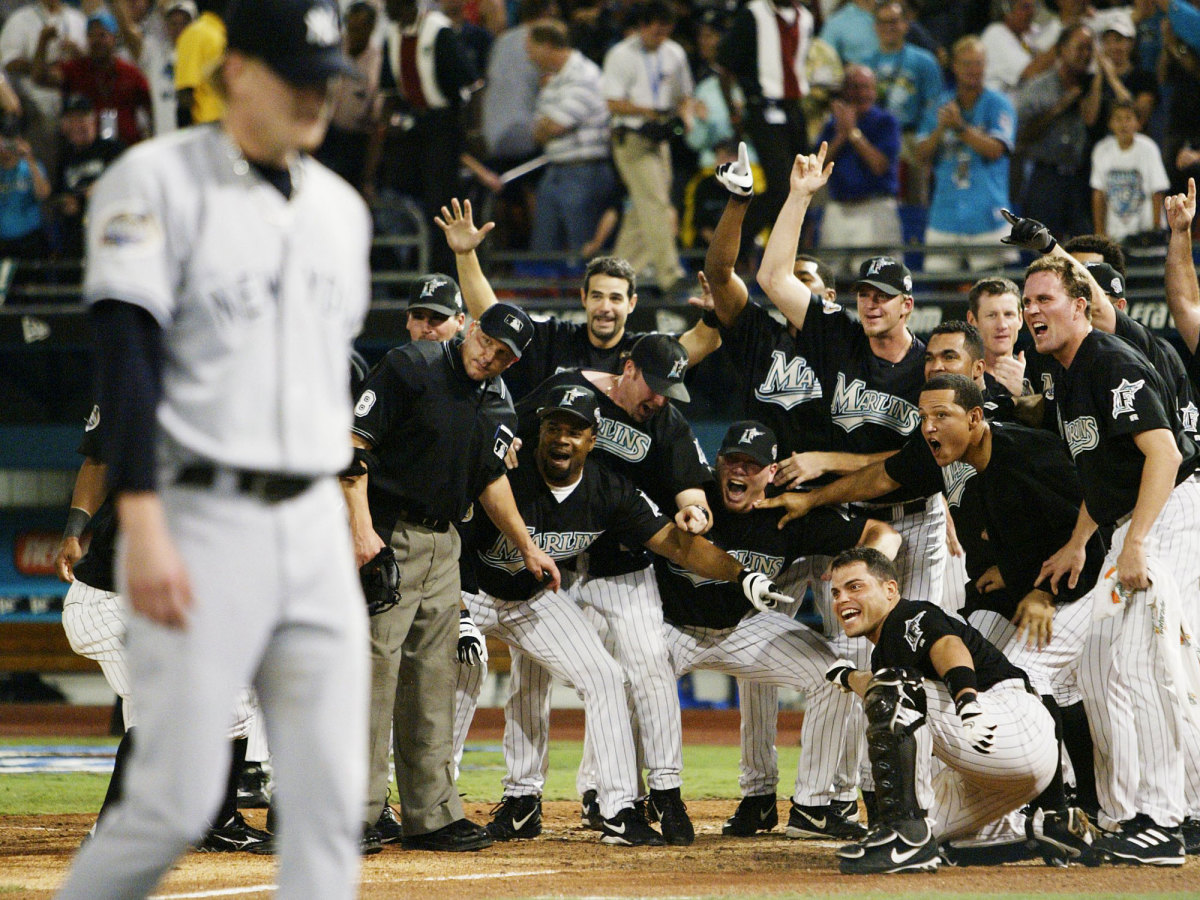
Afterward, Torre didn’t have much of an explanation for why he went with Weaver. “If he’s not in the game there he shouldn’t be on our roster,” said the future Hall of Famer.
Weaver walked off the mound while the Marlins celebrated behind him. The World Series was suddenly tied, and the Yankees had missed their best and, as it turned out, last chance to win the title. In Game 5 New York lost, 6-4, as Contreras and Hammond got roughed up in relief of Wells, who had to leave after a scoreless first inning because of back spasms. In Game 6 back in the Bronx, the Yankees were shutout, 2-0, by Josh Beckett. Rivera pitched the final two innings of New York's season in a losing effort.
As it turned out, Weaver wasn't on the Yankees roster much longer. He was traded to the Dodgers in the off-season in a deal that brought back Kevin Brown, who would be pounded by the Red Sox in the ALCS Game 7 rematch at Yankee Stadium the next October. The Yankees' dynasty was over, and after the 2007 season, so too was Torre's tenure as manager. New York didn't play in or win the World Series again until 2009.
In retrospect it is easy to understand all the reasons Torre had for not using Rivera: his concern over Rivera’s usage for the rest of the series, the fact that it was a tied game on the road, the Marlins’ heavily righthanded lineup and the chance that he might have needed a new pitcher anyway in the 13th inning. They weren't all that different from the reasons Showalter gave Tuesday night in Toronto. But all the reasonable explanations in the world won't ignore the fact that both Torre and Showalter lost while historically great relievers went unused. The lesson, then, for all future managers looking to avoid a similar fate is this: If you wait to win with your best option, don’t be surprised if you lose.
